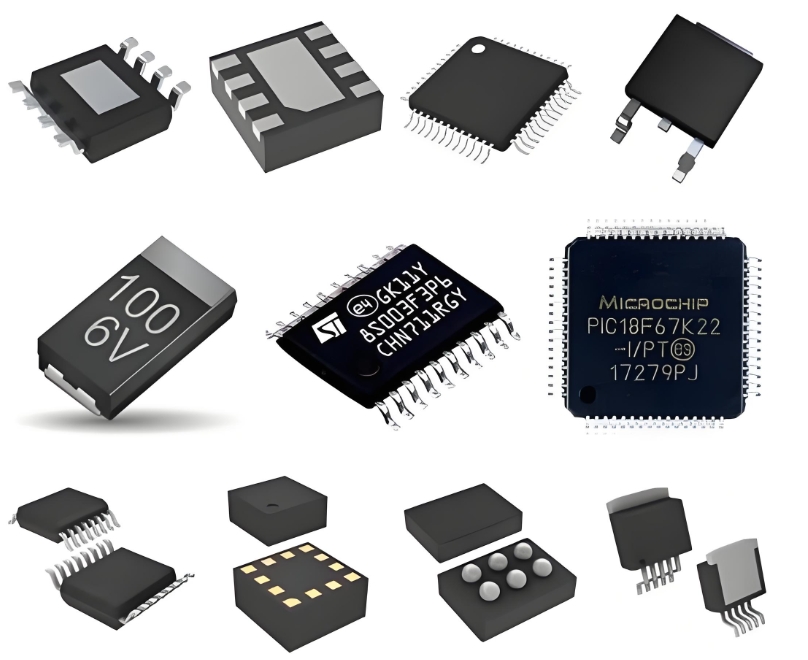**The AD2S80ATD: A Technical Deep Dive into the Industry-Standard Resolver-to-Digital Converter**
In the world of motion control, robotics, and high-reliability industrial systems, accurately determining the position and speed of a rotating shaft is paramount. For decades, the resolver has been the sensor of choice in harsh environments due to its simple, rugged construction and immunity to noise, dust, and extreme temperatures. However, its analog outputs require sophisticated processing to be usable by digital systems. This is where the resolver-to-digital converter (RDC) comes in, and few have achieved the legendary status of the **Analog Devices AD2S80ATD**. This device set the benchmark for performance and reliability, becoming an enduring industry workhorse.
**The Core Function: From Analog Sine Waves to Digital Precision**
At its heart, the AD2S80ATD performs a complex task with elegant efficiency. A resolver consists of a primary winding (rotor) and two secondary windings (stator) oriented 90 degrees apart. The rotor is excited with a high-frequency sinusoidal reference signal. As the shaft rotates, the coupling to the secondaries varies, producing output signals that are modulated by the shaft's angle (θ). These outputs can be expressed as:
* V_S1 = V_ref * sin(θ) * sin(ωt)
* V_S2 = V_ref * cos(θ) * sin(ωt)
The AD2S80ATD's primary mission is to decode these SIN and COS signals, extracting the high-resolution digital angle θ. It achieves this through a **Type II tracking loop architecture**, which is essentially a closed-loop control system. This loop continuously minimizes the error between the actual resolver inputs and an internal digital estimate of the angle. This method is superior to open-loop sampling because it provides inherent noise rejection, excellent stability, and a continuous, lag-free output even for rapidly changing angles.
**Key Technical Characteristics and Innovations**
The "ATD" suffix denotes a specific temperature grade, but the entire AD2S80 family is renowned for its robust feature set:

* **High Resolution and Programmable Options:** A standout feature of the AD2S80 is its **programmable resolution**, offering selections from 10 to 16 bits (1024 to 65536 positions per revolution). This flexibility allowed designers to precisely match the converter's performance to their system's requirements, optimizing cost and capability.
* **Velocity Output:** Beyond absolute position, the chip provides a critical analog voltage output proportional to the shaft's velocity. This tachometer output is invaluable for closing velocity loops in servo systems without the delay inherent in differentiating a position signal.
* **Robust Reference and Signal Handling:** The chip generates its own **6.25 kHz resolver excitation signal**, simplifying system design. It is designed to handle large signal imbalances and variations in the input SIN/COS signals, maintaining accuracy even with non-ideal resolvers or long cable runs.
* **High Noise Immunity:** Operating on the ratiometric principle, the AD2S80ATD is highly resistant to noise and voltage drops. Since the output information is encoded in the amplitude ratio of the SIN and COS signals, any noise common to both lines or fluctuations in the excitation reference voltage are effectively canceled out.
**Why It Became an Industry Standard**
The AD2S80ATD's dominance was not accidental. It emerged as the definitive solution because it solved critical engineering challenges with a single, reliable component. Its combination of high accuracy, programmable resolution, and integrated velocity output made it the perfect interface between the analog physical world of motors and the digital world of microprocessors and FPGAs. It was designed for **mission-critical applications** in aerospace, military, and industrial automation where failure was not an option. Its reputation for durability and performance ensured its longevity in designs for generations.
**Legacy and Modern Context**
While modern, more integrated RDCs (including newer products from Analog Devices) offer smaller form factors, lower power consumption, and higher levels of integration (e.g., on-chip programmable gain amplifiers), the AD2S80ATD remains a classic. It is a testament to a brilliantly executed design that continues to be used in legacy systems and new designs where its proven track record is paramount. Understanding its operation provides a fundamental insight into the principles of position sensing that remain relevant today.
**ICGOODFIND:** The AD2S80ATD is far more than a simple converter; it is the **archetypal resolver-to-digital converter** whose robust, high-performance, and flexible design established the performance benchmark for an entire category of components and solidified its role in countless high-reliability motion control systems.
**Keywords:** Resolver-to-Digital Converter, Tracking Loop, Programmable Resolution, High Noise Immunity, Motion Control
